By Manasa Sitaram
Illustrations Adithya Venugopol
Translation Emiko Anayama
The term ‘curry’ is at once strikingly familiar and yet staggeringly complex. Hearing the word can almost immediately conjure up a smell, a taste – and yet no two versions of that conjured imaginary dish are the same.
In truth, there is no universal form of ‘curry’ as we’ve come to know it. From Japan to Germany, Britain to India, the global footprint of this colonial leftover turned household dish is remarkable. Curry represents everything from histories of exploitation and sprawling trade routes, to diasporic longing: lingering in the corridors of homes, in faint scribbles across recipe books, and dissolved into fragrant colorful powders. Yet somehow, in all these myriad forms, curry retains a sense of comfort.
It is precisely this intertwined and sprawling history that makes this supposedly singular dish so challenging to pin down. From Parsi cafes in Mumbai, to coastal cuisines of Bengal and Kerala, to the French influences of Pondicherry and the rich royal traditions of Rajasthan and Hyderabad, these regional superstar curries are an entry point to a category that’s far too big to fit under a single umbrella term.
Rogan Josh

The rogan josh is arguably the most iconic reflection of India’s northernmost region, Kashmir. This goat- or lamb-based dish, inherited from Mughal and Persian culinary traditions, is a signature feature in India’s repertoire of meat-heavy dishes. There are several possible etymological origins for rogan josh. The first is from its Persian roots, in which roghan refers to clarified butter, or oil, and josh (ghosht) refers to the act of stewing. An alternate theory focuses on Urdu (given Kashmir’s proximity to Urdu-speaking Pakistan), where roghan means red and josh can mean meat or juice. Some also claim that josh is, in fact, a Hindi word meaning passion. The deep red hue that identifies this passionate and meaty dish can be attributed to the ample use of both lal mirch (red chillies) and mawal ke phool, the cockscomb flower indigenous to the Kashmiri Valley.
Onion Sambar
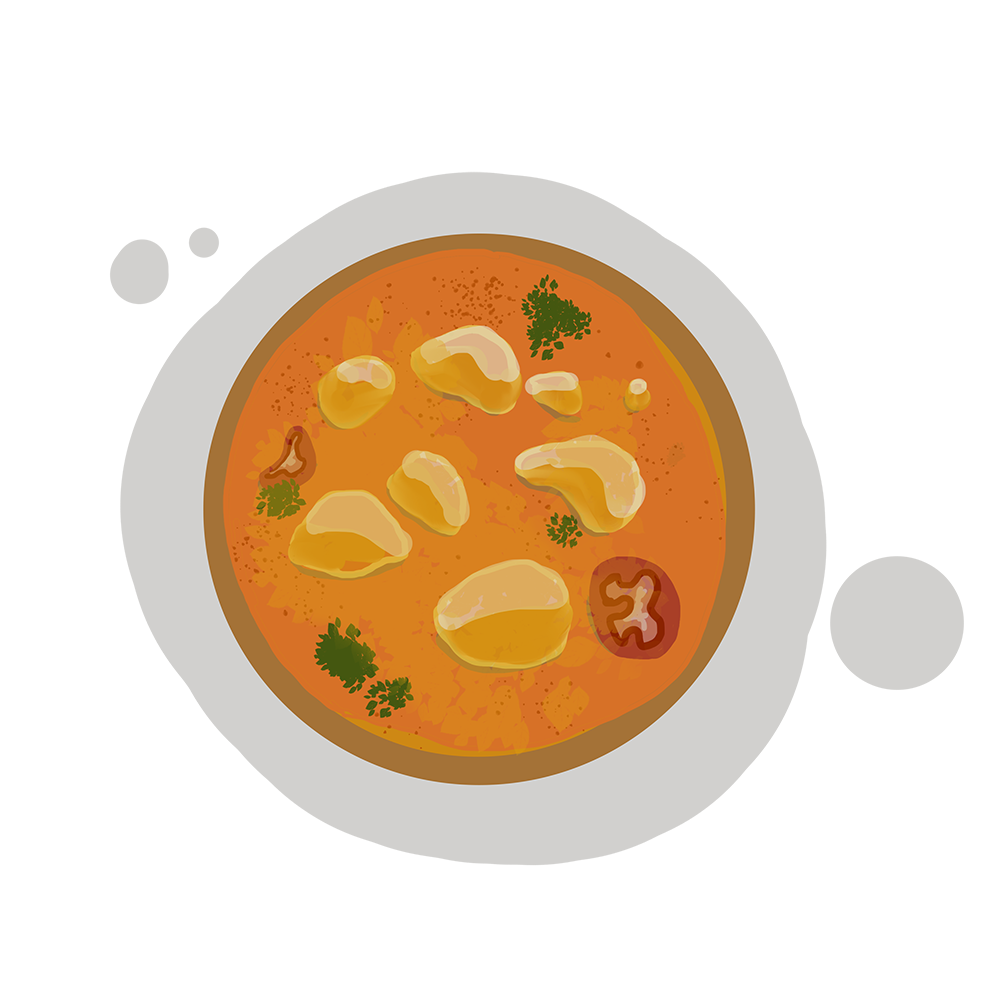
Sambar, a staple of southern India, is a lentil-based tamarind broth made with a variety of vegetables and often eaten with rice. Said to date back to the 17th century, some believe this dish was created by Sambaji, a Maratha ruler who tried to make himself a lentil dal curry while his head chef was away, and ended up with a tamarind-based variation – which he then promptly called sambar after himself. In grandmothers’ kitchens across southern India, this household staple has more than 40 variations, using a slew of different vegetables and boasting a variety of textures and tastes – thin or thick, sweet or tart. The onion sambar, most popular in the state of Tamil Nadu, includes slightly caramelised onions or shallots, lending a sweet and sour profile to this traditionally tart dish.
Meen Moilee
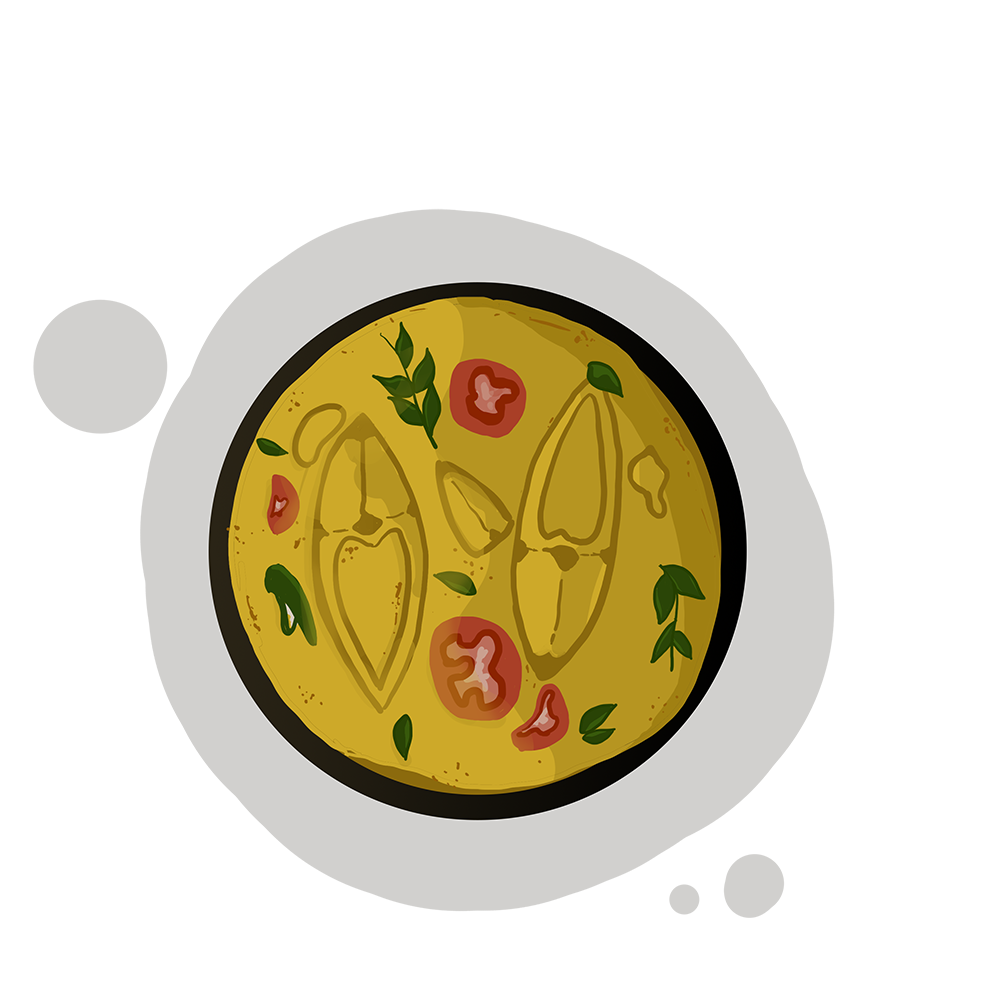
Made popular by the Christian community in the coastal state of Kerala, the Meen Moilee is a sour and creamy stew that is both comforting and nourishing. Kerala, famous for its seafood, was also the first point of entry for Portuguese rule. Legend has it that the Portuguese who first landed on the Malabar coast were unable to handle the richness and the spices of local cuisine, inspiring locals to add coconut milk to their typical fish dish, resulting in the meen moilee we know today. In modern versions, the coconut flavor is usually elevated by kodam pulli, a type of tamarind native to the Malabar coast and used in a variety of sour dishes.
Murgh Makhani
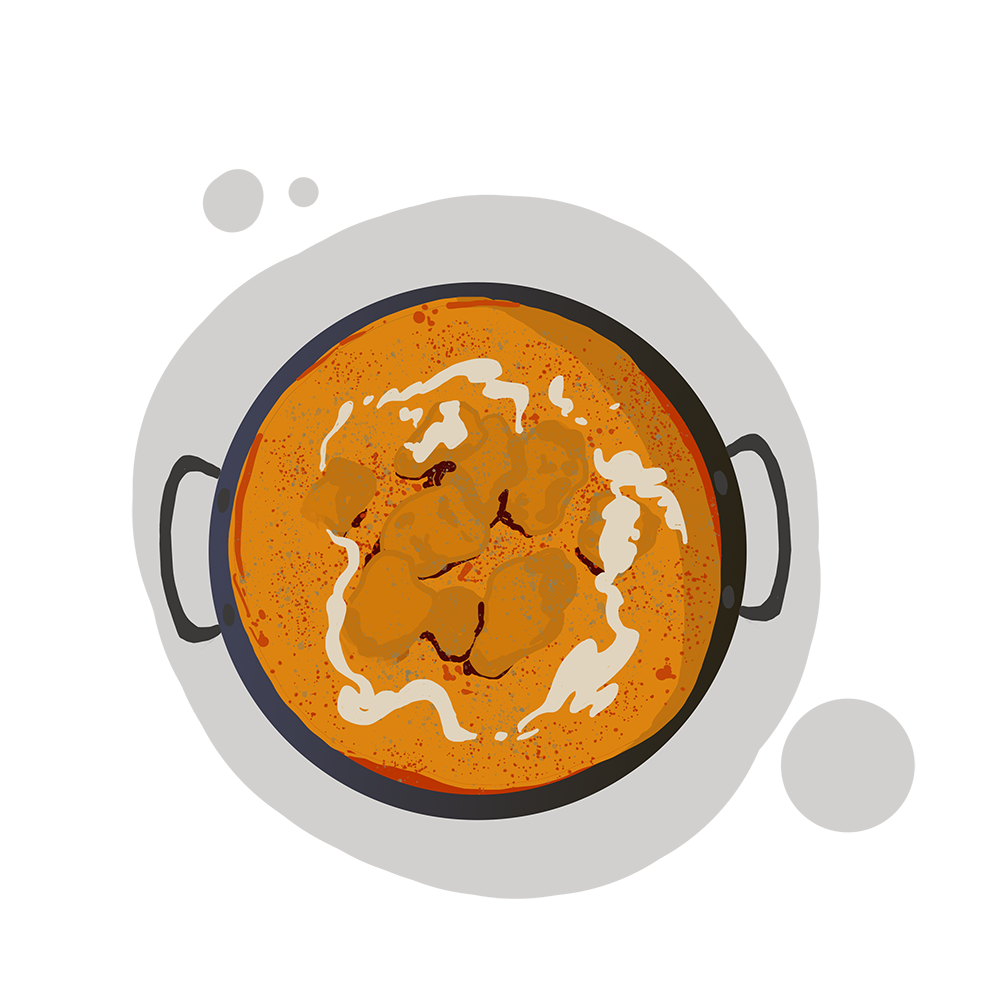
Murgh makhani is a northern Indian dish that is wildly popular across the world under its English name: butter chicken. This tomato-based creamy gravy was invented in the 1950s by the chefs of a popular Delhi restaurant named Moti Mahal. The chefs, Punjabi refugees who moved to Delhi after the India-Pakistan partition, mixed leftover marinade with unsold chicken from the restaurant, experimenting with adding butter and cream along the way, eventually creating this decadent and creamy dish. More recent variations of murgh makhani are made with cashew paste instead of cream.
Navratan Korma

Korma, meaning braise, refers to a variety of dishes in which meat and vegetables are marinated in yoghurt and slow-cooked. Kormas are royal dishes dating back to the court kitchens of Mughal rulers, and still have an air of prestige. While most kormas tend to feature both vegetables and meat, the navratan korma is a vegetarian version that brings together a colorful range of vegetables, nuts, and dried fruit. Navratan, which literally means “nine jewels,” symbolises the way in which nine gemstones come together to make an assortment of colors.
Rasam
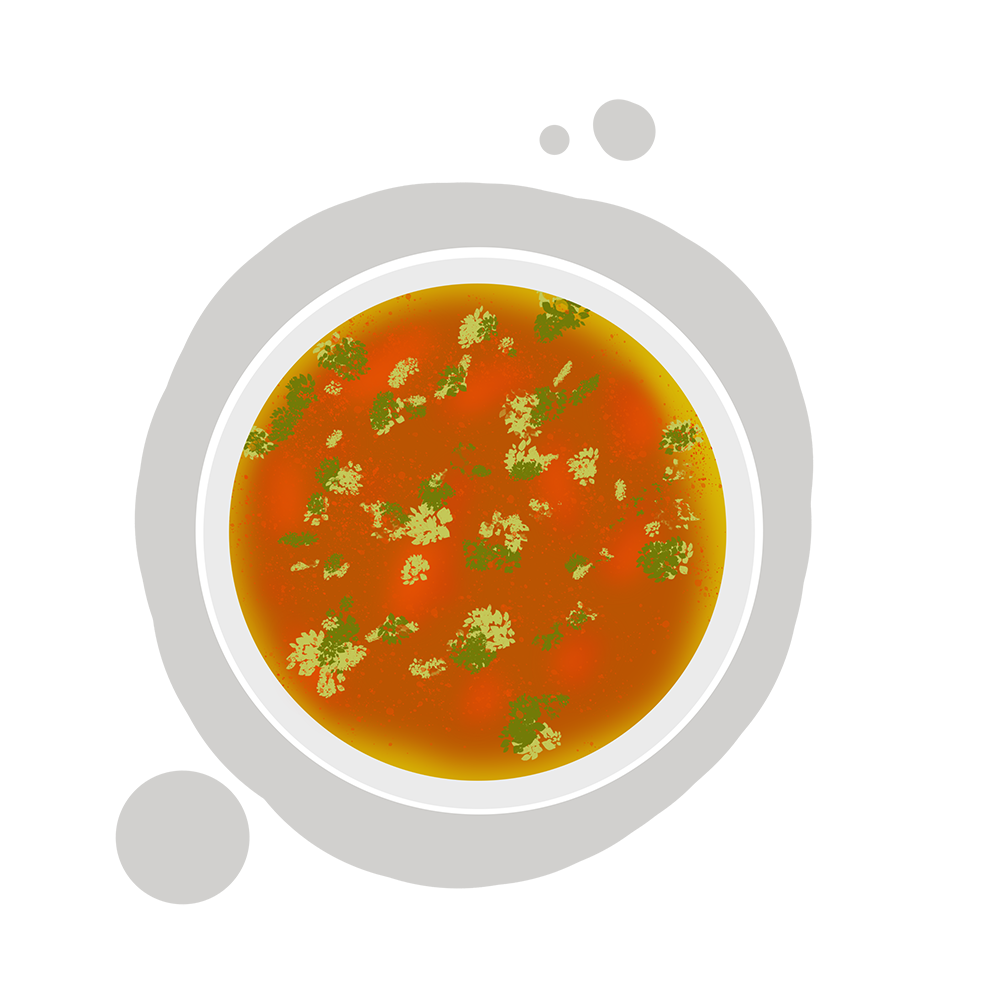
Rasam, derived from the Sanskrit word for juice, rasa, is a clear tamarind-based soup eaten primarily in southern India. While it is believed to have originated in Madurai in the 16th century, it is also known across the region as saaru, or chaaru. A vegetarian staple, this dish is prepared with tamarind and tomato stock with the addition of lemon, a variety of spices and lentils. While rasam can often be prepared alongside sambar, the watery, soup-like texture of rasam sets it apart from sambar. In many Tamil households, rasam is a comforting, wholesome dish that is known for its digestive properties.
Kadhi

Kadhi, a slightly sweet yoghurt based dish, gets its name for the liberal use of curry leaves, known as kadhi patta in Sindhi. Pakoras, or vegetable fritters, are fried and then added to the chickpea flour and yoghurt-based gravy. Some recipes also call for the addition of jaggery, or cane sugar, to add a tinge of sweetness. This truly pervasive dish has made its way all across India, with each state having a different variation. The most notable versions of kadhi are in Gujarat in western India, where it is made with buttermilk, and Maharashtra in northern India, where it is made with kokum fruit.
Enchor Tarkari
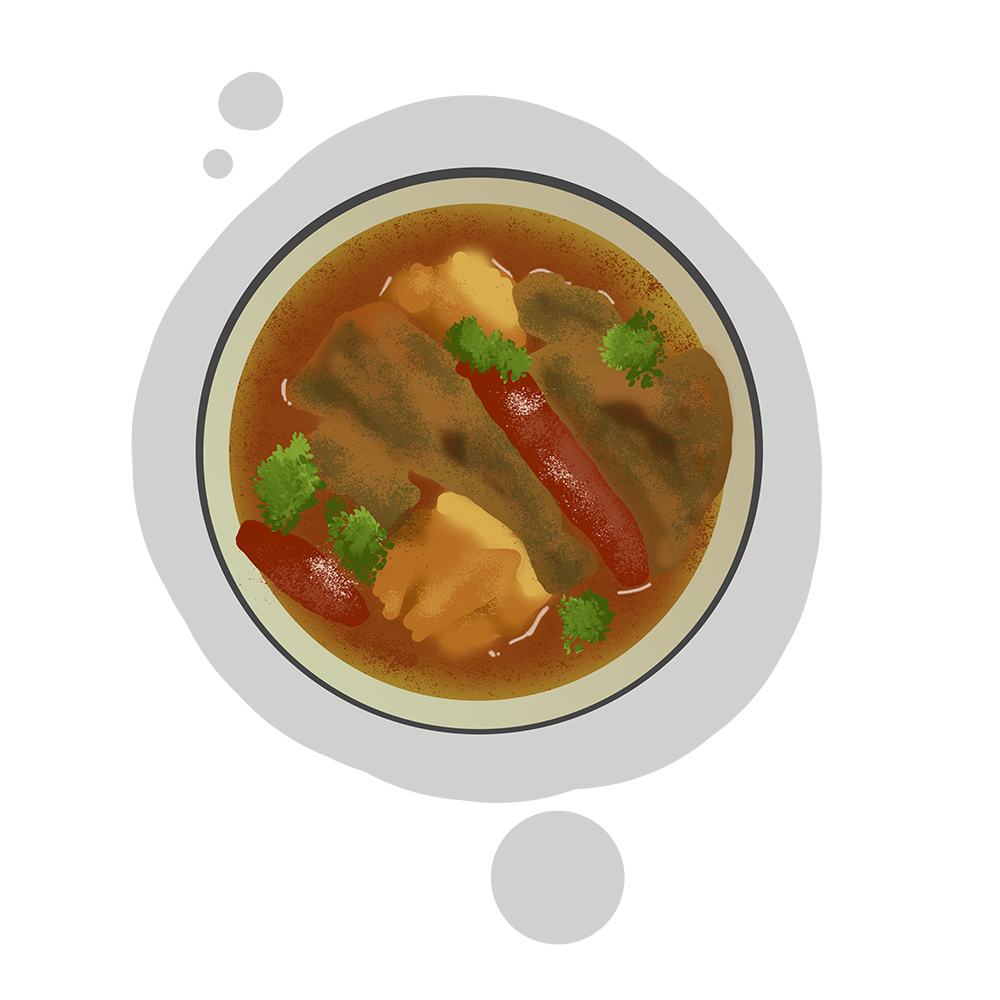
Enchor tarkari, is a dish from Bengal, a state in eastern India, utilising a popular but little-known ingredient, the jackfruit. Enchor refers to the young jackfruit, while tarkari is a generic term referring to the semi-gravy style in which it is cooked. Owing to its soft and rubbery texture, enchor is often used as a meat substitute. Typically made during the Bengali New Year, this dish is also commonly seen in the summer when jackfruits are plentiful. The dish is also popular in Bangladesh and forms part of the country’s shared history with Bengal.
